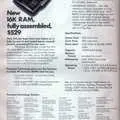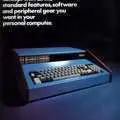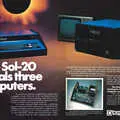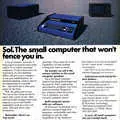Processor Technology Advert - January 1977
From Byte - The Small Systems Journal
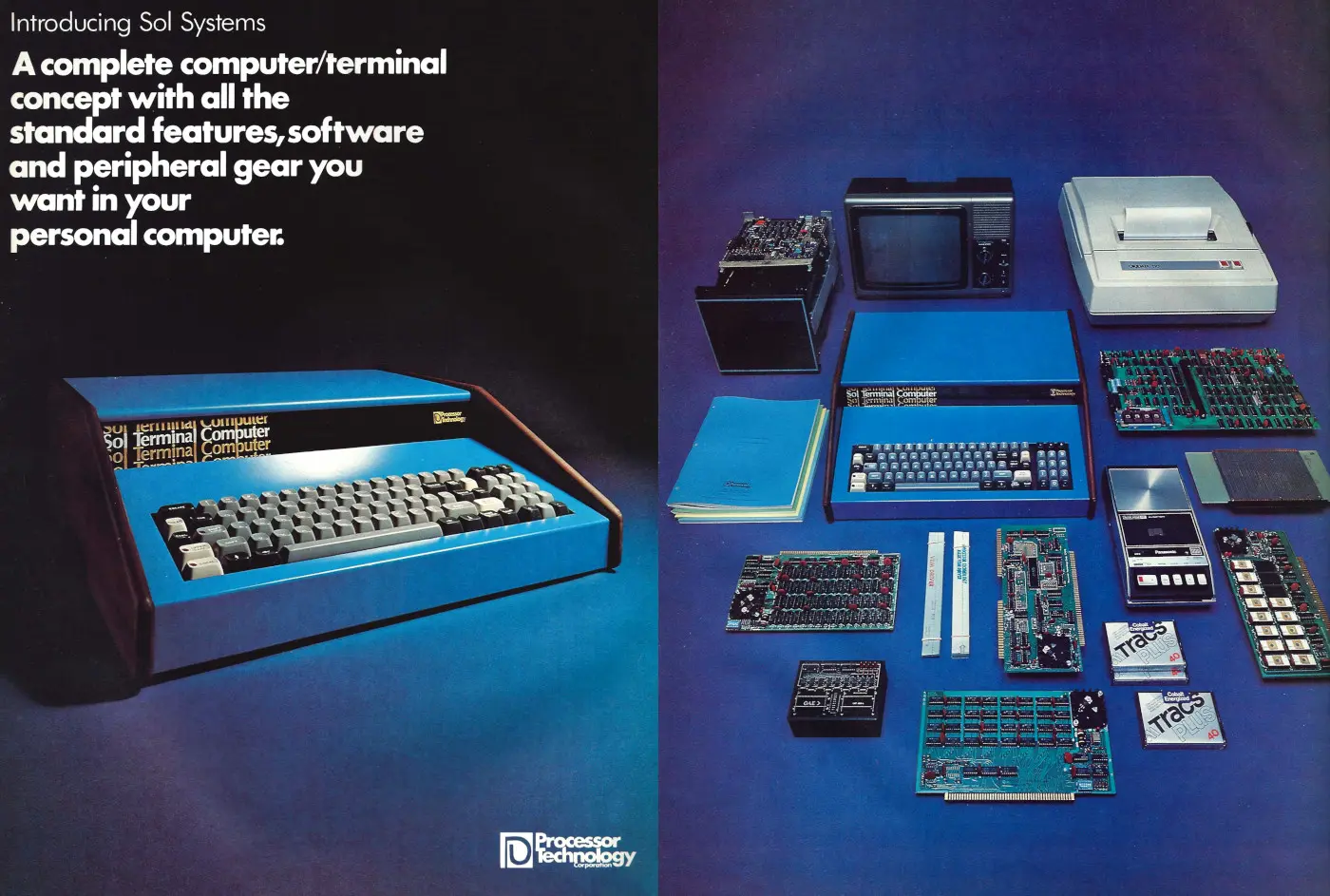
Introducing Sol Systems - A complete computer/terminal concept
This advert - which was part of an impressive six-page spread - shows the Sol-20, a machine which first shipped only a month before in December 1976, as well as the impressive range of peripherals which were available for it.
It was designed by Lee Felsenstein and was essentially a way of building a computer around Felsenstein's earlier Video Display Module - the VDM-1, which had been introduced at the Albuquerque Altair Convention in March 1976. It was the first ever memory-mapped alphanumeric display for personal computers[1].
The Sol-20 was an S-100-based system which offered a range of CPU options - the Intel 8080, 8080A or 9080A - together with 1024 "words" of static RAM and the same again of PROM, out of a total maximum of 64K.
Sol's personality modules
It also came with three interchangeable "Personality Modules", which were plug-in ROM chips. The socket for these was on the motherboard, but it was accessible from the rear of the machine, making them easy to change.
The first - and default - module was called SOLOS, and was tailored to hobbyist users as it provided a built-in machine-code monitor, as well as access to cassette-tape routines and I/O. Because it was in ROM it was instantly available when the machine booted.
The other modules were known as SOLED, which turned the Sol-20 into an "advanced editing terminal system", and CONSOL, which was the cheapest of the three but which provided minimal capability to the machine[2].
Processor Technology started out in 1975 manufacturing memory modules and other I/O boards for machines like MITS' Altair, which shared the same S-100 bus architecture - known originally as the Altair bus.
It also manufactured the first S-100 video display, which the Sol-20 shipped with as standard. This was still fairly unusual for computers at the time as video output was mostly an expensive optional extra, even for systems like the Apple 1.
It was also possible to buy the Sol in "Sol PC" form, which was basically just the motherboard, for $475, or about £2,880 in 2025 money.
The full system, according to a price list on sol20.org, retailed for $5450 (about £32,800 in 2025 money) - this included BASIC 5 on floppy, the disk drive to load it, a display monitor, and two entirely separate 16K memory modules.
The Sol-20 also came without a resident interpreter - you had to load BASIC from tape or floppy every time you booted the machine up. The third-generation machines that would appear in a few months' time - the Commodore PET, Apple II and TRS-80 - would differ from this approach not least because their BASICs were stored in ROM and so were ready to go when the machine was turned on.
This became the default for the next five or six years before the IBM PC put everything a step backwards by reverting to the "boot then load something extra to do useful stuff afterwards" convention.
About 10,000 Sol-20s were apparently made, but the company didn't adapt to the third generation of computers and went bust in 1979[3].
An article in Personal Computer World titled "Save our Sol" alludes to this as UK-based S-100 bus specialist Cromart had started manufacturing Processor Technology's video display monitor, having bought the rights after the company failed[4].
AMD and second-sourced chips
The 9080A CPU mentioned in the advert is actually AMD's first 8080[5]-compatible processor, which was initially built by reverse-engineering Intel's original.
They were produced from September 1975, but by 1976 AMD had secured a cross-licence deal and so had become an authorized second-source manufacturer - just like Synertek and Rockwell were for MOS Technology's 6502.
This agreement came to an end in 1988 at the advent of the 80386 processor, when Intel decided that it wanted its market back.
By the time of the 80286, Intel only had 70% of the market for what was essentially its own chip, with the rest made up of AMD, Harris and a bunch of other second-sourcers.
Not only that, but the vigorous competition often meant that these other companies would cut their prices in order to gain a bit more market share, leading to lower revenues for Intel, which was forced to continually price-match to keep up.
And so it decided that from the '386, there would be no second sourcing, which really meant that Intel could keep its prices up for as long as it wanted.
By the summer of 1988, an 80286 was selling for less than $30, whilst Intel's own hobbled version of the 386 - the 386SX (or "Essex" as Guy Kewney of Personal Computer World liked to call it) - wasn't expected to drop below $100 until a year after its launch, or around the end of 1989.
The full-fat version of the 386 wasn't expected to be much less than $200[6], or around £520 in 2025.
Meanwhile, in a comparison of the 386SX and its larger sister, Kewney hinted at the passing of an era when people could build their own computers from parts, writing:
"Nobody could mistake one for the other. Whereas the 386 is an enormous package with 132 pins pointing straight down, the SX hardly looks like a chip at all. It has 100 filament-fine whiskers all around the edge and is tiny by comparison with its big brother ... you wouldn't be able to solder one by hand".
Date created: 21 July 2019
Last updated: 09 October 2025
Hint: use left and right cursor keys to navigate between adverts.
Sources
Text and otherwise-uncredited photos © nosher.net 2025. Dollar/GBP conversions, where used, assume $1.50 to £1. "Now" prices are calculated dynamically using average RPI per year.
